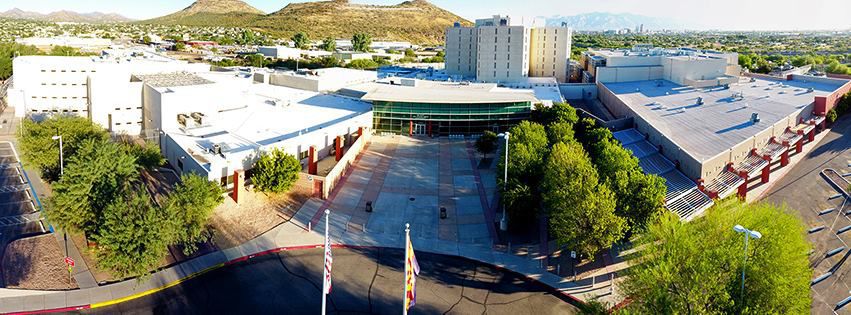With a June 30 deadline to reduce the jail population here by another 3 percent, organizers with the Pima County Safety and Justice Challenge are rolling out new strategies to get it done.
In 2015, Pima County was selected as one of 20 communities to participate in the John D. and Catherine T. MacArthur Foundation’s Safety + Justice Challenge, a national initiative to reduce over-incarceration by changing the way the country thinks and uses jails.
The county was given a $150,000 planning grant and in 2016 was awarded $1.5 million to invest in programs and initiatives to reduce Pima County’s jail population.
Under the funding, the challenge started risk screenings at the jail to identify people with substance-abuse or mental-health issues, adding them to a specialized caseload.
During the challenge’s first few years, the misdemeanor population in the jail decreased by nearly half and outstanding arrest warrants at local courts plummeted, thanks to after-hours and weekend resolution events funded by the challenge. Organizers also seated a 33-member community collaborative with representatives from the community, law enforcement agencies, courts, probation and formerly incarcerated individuals.
Last October, organizers applied again for $1.5 million in funding and an additional $300,000 community engagement grant, which the MacArthur Foundation approved in February, provided that Pima County was able to lower the jail population by 6 percent by June 30.
When organizers were applying for the planning grant in 2014, the average daily population at the Pima County jail was 2,136. By the time the funding was approved in 2015, the average population had already dropped to 1,894, which the MacArthur Foundation set as the baseline figure that Pima County should work to further reduce.
Organizers initially set the reduction goal at 26 percent, but realized they wouldn’t be able to meet that goal by 2019, dropping the number to 11 percent .
When the MacArthur Foundation approved the second round of grant funding, it specified that Pima County needs to show a reduction of 17 percent from the baseline by 2020.
The foundation’s request of a 6 percent reduction by June 30 is meant to demonstrate “significant progress” towards the 2020 goal.
In January, community collaborative members began planning how to reduce the inmate population with a primary focus on nonviolent drug offenders, establishing a jail population review committee and a probation best practices committee, said Terrance Cheung, Pima County's Director of Justice Reform Initiatives.
The jail review committee will assess the custody status of inmates and identify safe and effective release conditions while balancing public-safety concerns. It is expected to affect about 5 percent of the reduction, Cheung said.
The probation committee will account for the other 1 percent of the reduction by using a set of strategies, including eliminating automatic jail holds, expanding efforts to re-engage probation absconders and reducing petitions to revoke probation.
A 20-person committee reviewing the jail population is to sort the jail data to find defendants who meet specific criteria. That includes those who have been in jail at least 10 days, have been booked on nonviolent charges and have had previous probation violations.
“Trying to whittle the list down has been more complicated,” Cheung said. “No one case is the same as another.”
The review committee should be fully operational by the end of the month, but even in the dry-run phase it has already identified three inmates to release to pretrial services and connect with services.
Cheung is hesitant to get excited about the progress, saying that jails are really fluid and some months’ bookings are inexplicably higher than others.
“We’re trying to do a systems change here, and we have no idea why (the monthly booking numbers) fluctuate,” Cheung said. “We don’t want to celebrate until we hear back from the foundation.”
While the challenge was approved for funding to cover several new positions and strategies over the next two years, organizers are holding off on everything else until they’ve met the six-month 6 percent reduction goal.
“We have to be responsible in how we spend the money,” Cheung said.
To assist in the efforts to safely reduce the jail population, the Pima County Sheriff’s Department announced earlier this month the hiring of Mike Steber as the coordinator for the jail’s population.
Steber’s job will entail continuous review of the jail’s roster and case-management system to look for inmates jailed for non-violent offenses who, if released, will be unlikely to miss scheduled court appearance, according to a news release.
Steber’s position is funded through the budget for the Criminal Justice Reform Unit, which is part of the county’s general fund. Steber will report to the jail staff and work to identify trends that will keep the jail population to a minimum. He’s also charged with researching programs, including local warrant-resolution after-hours events that aid in keeping the jail population down, according to the release.





